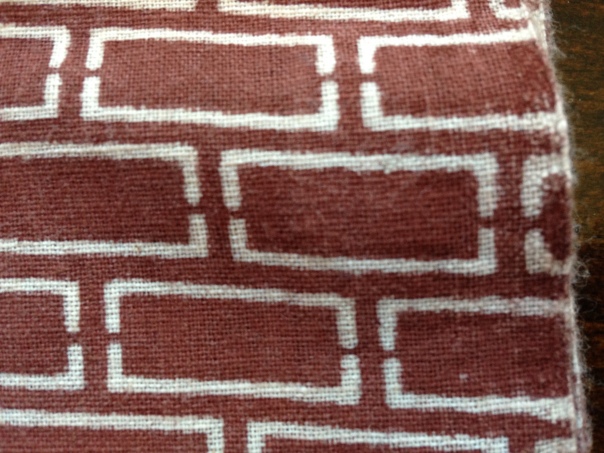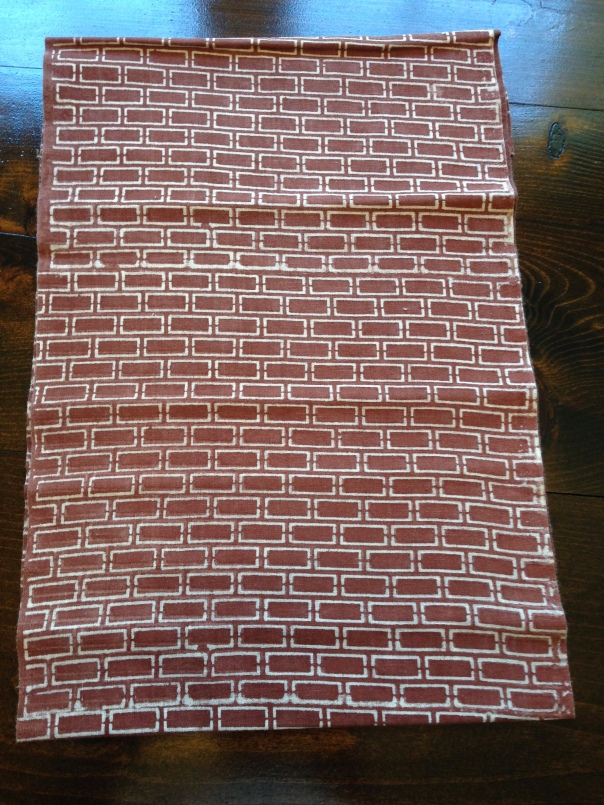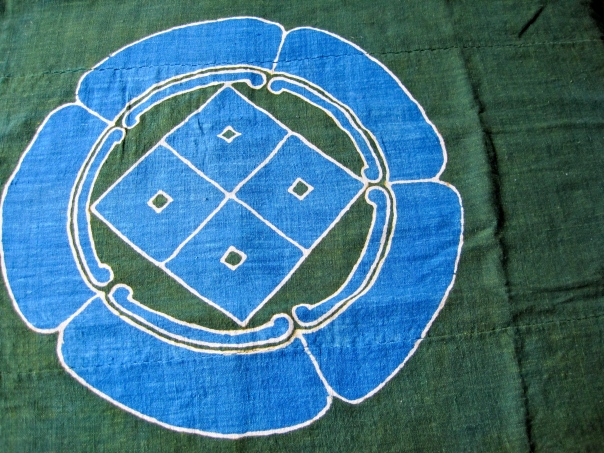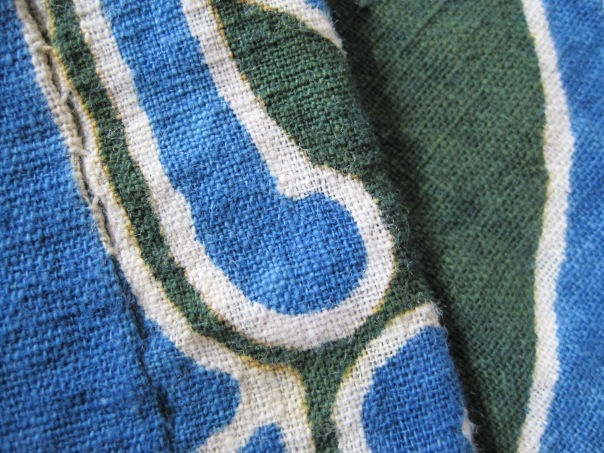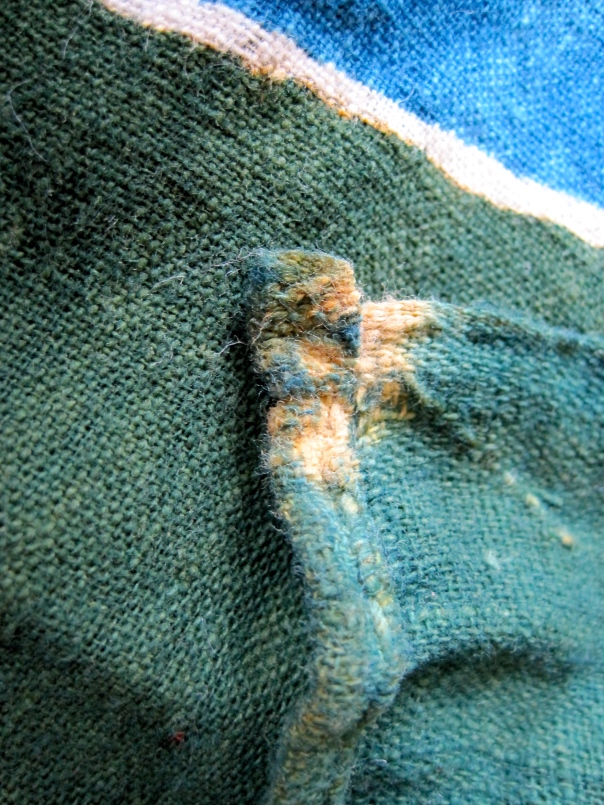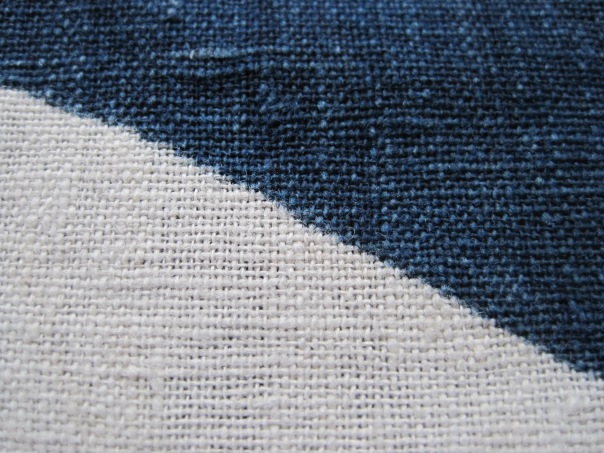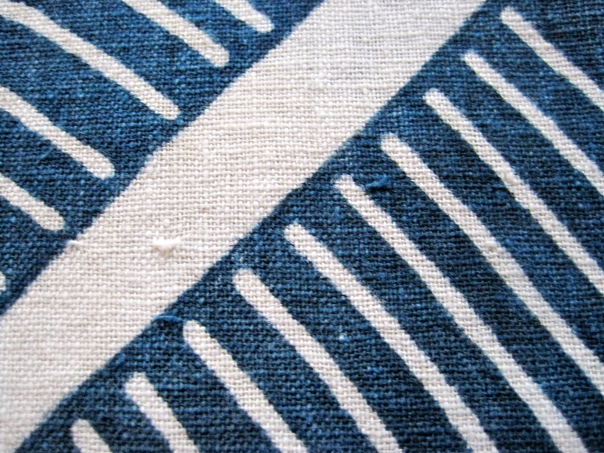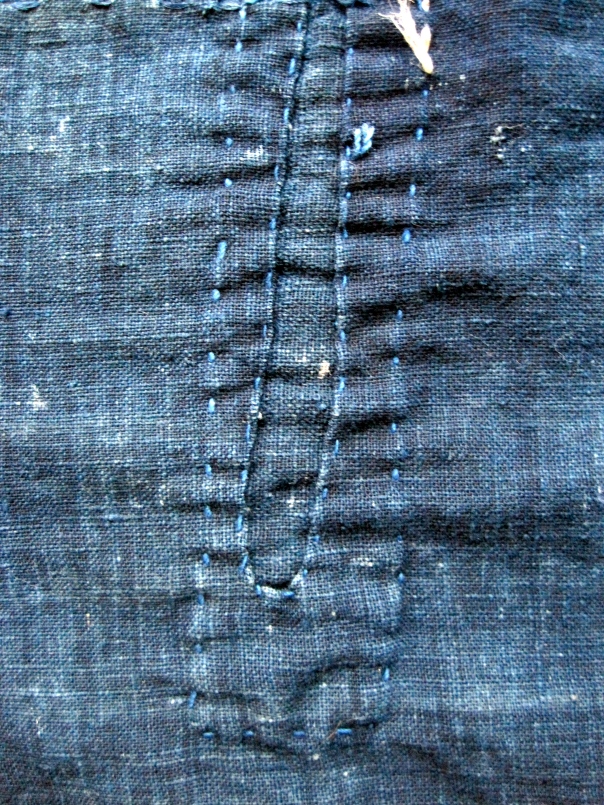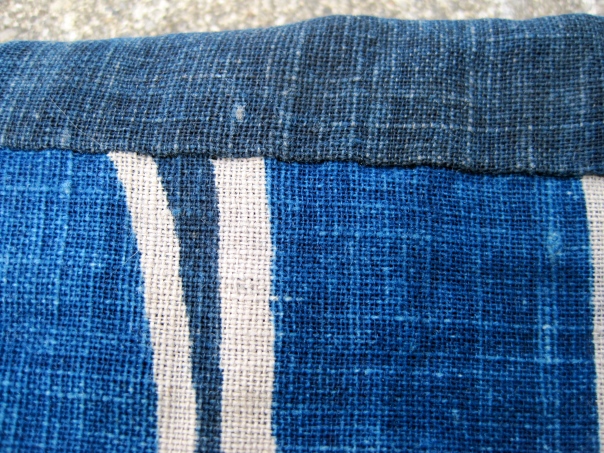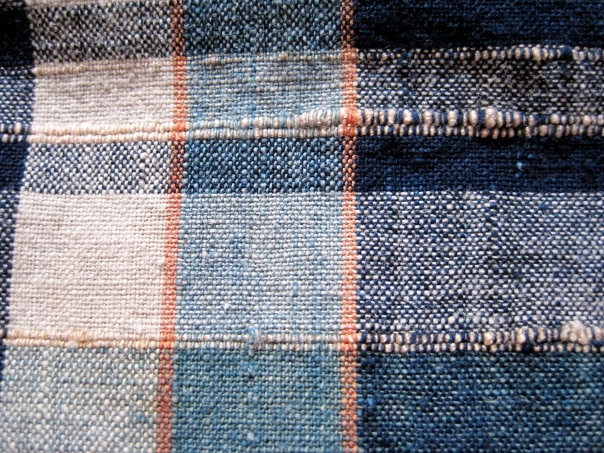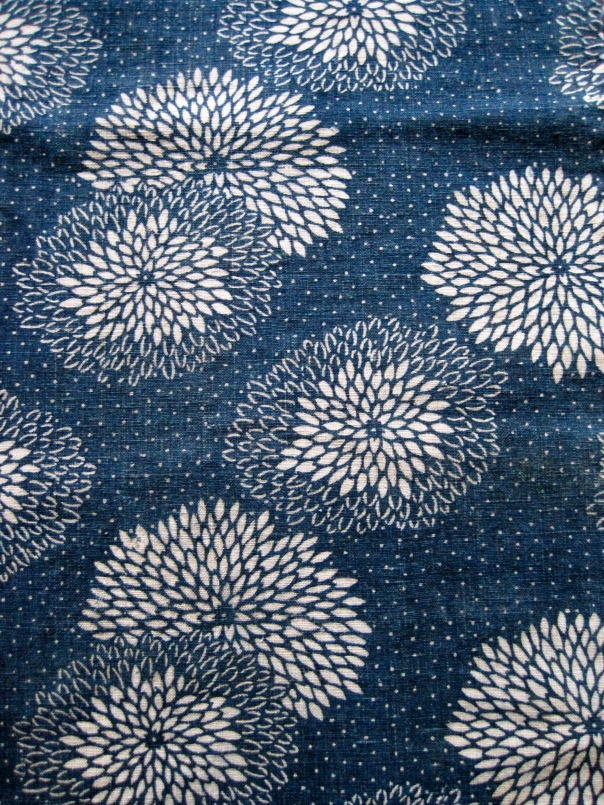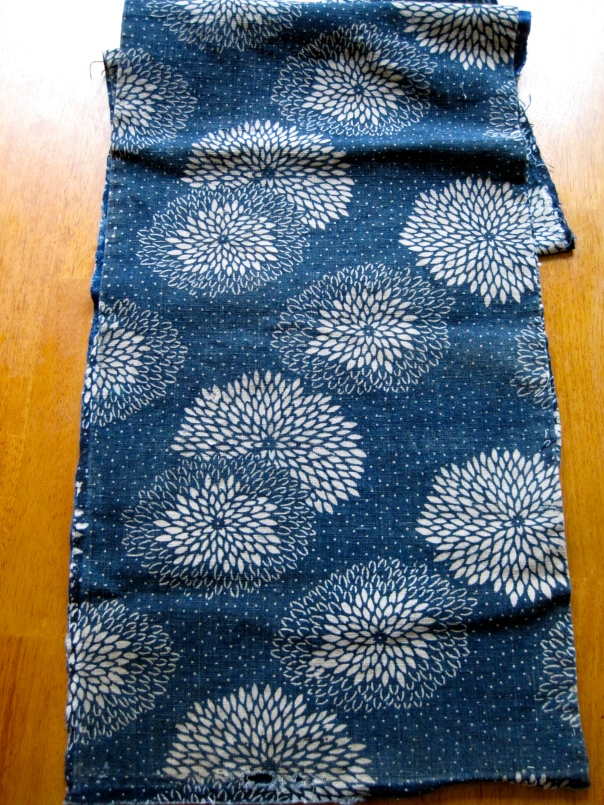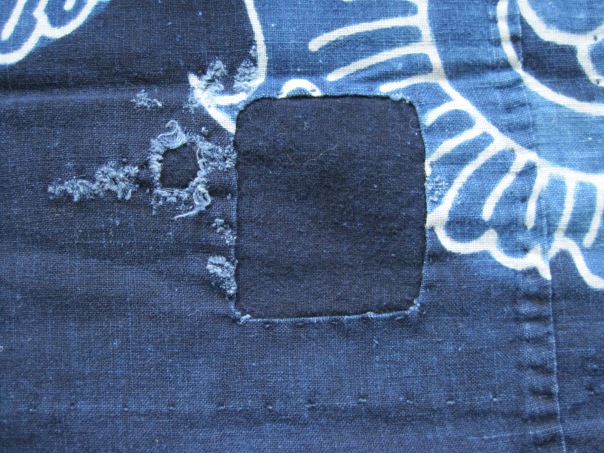The two pieces of mid 19th century hand spun and hand woven cotton shown above are dyed using benibana or safflower. This flower in the thistle family is used to dye cotton and silk a range of colors from light pink to deep red. As benibana dyed fabrics age they begin to turn a more brown or rust color like the pieces in this post.
both of the fabrics shown here has been pattered using a katagami, or paper stencil used to apply rice paste to the fabric as a resist before dying. These stencil dyed fabrics are known as katazome.

